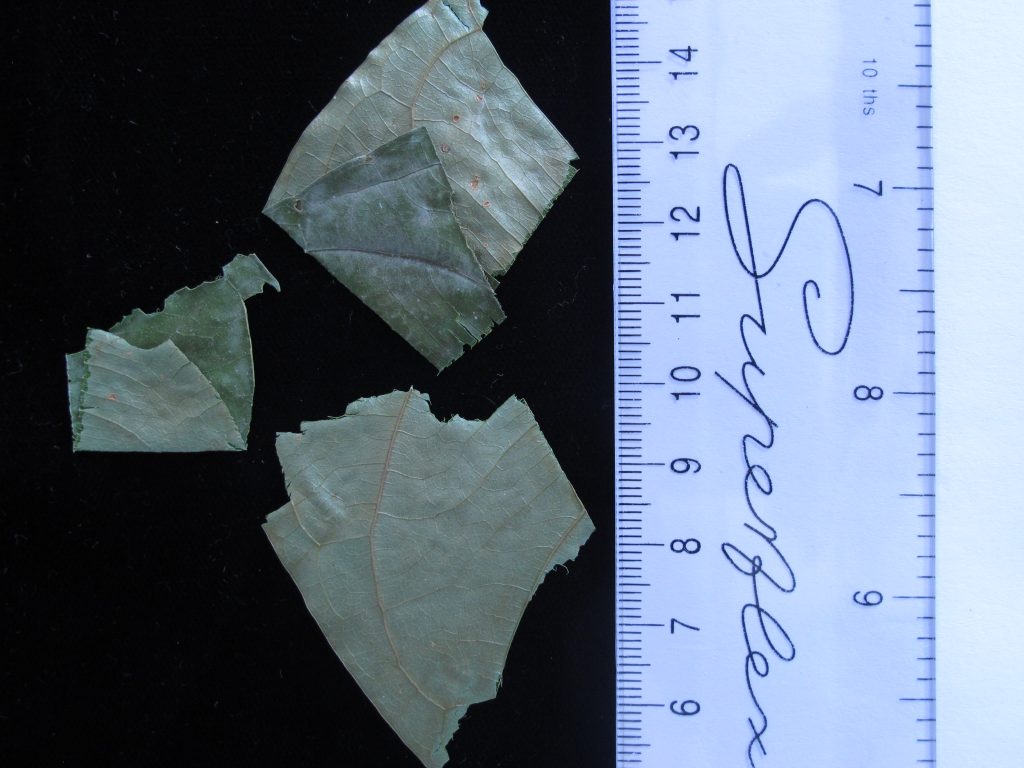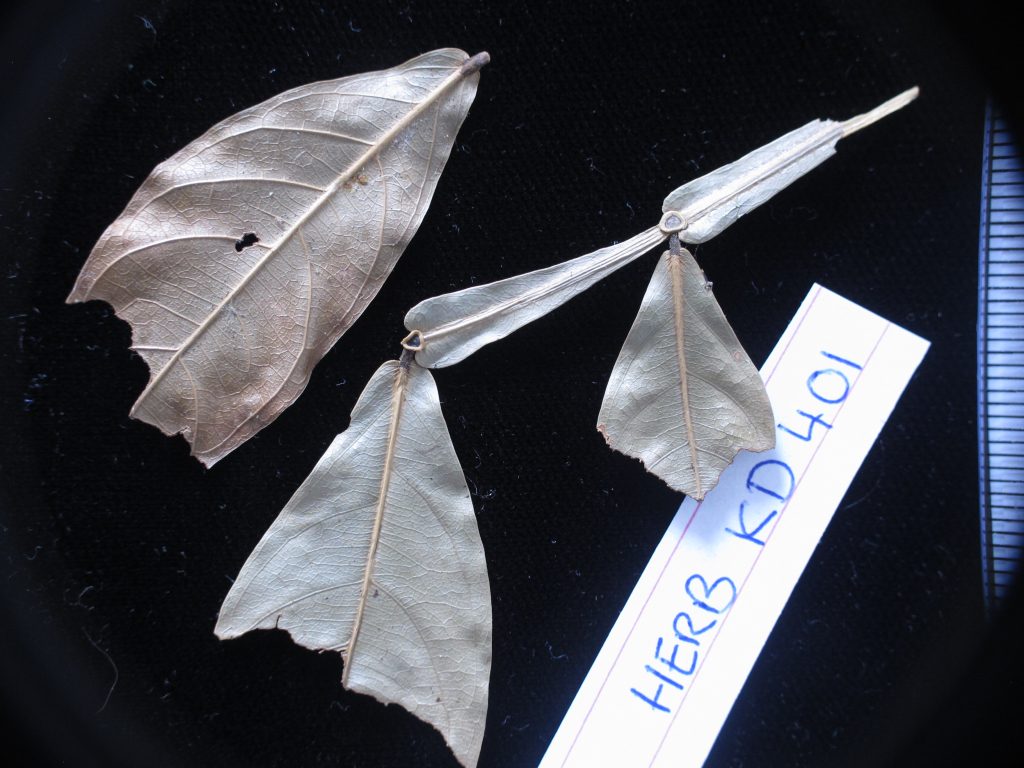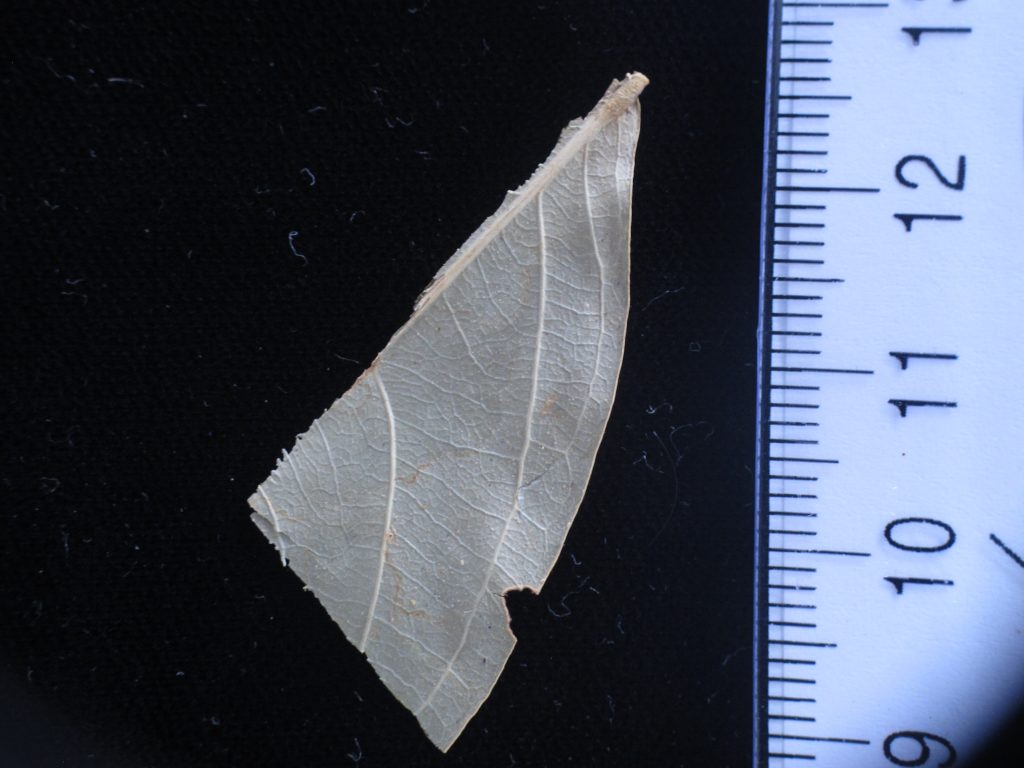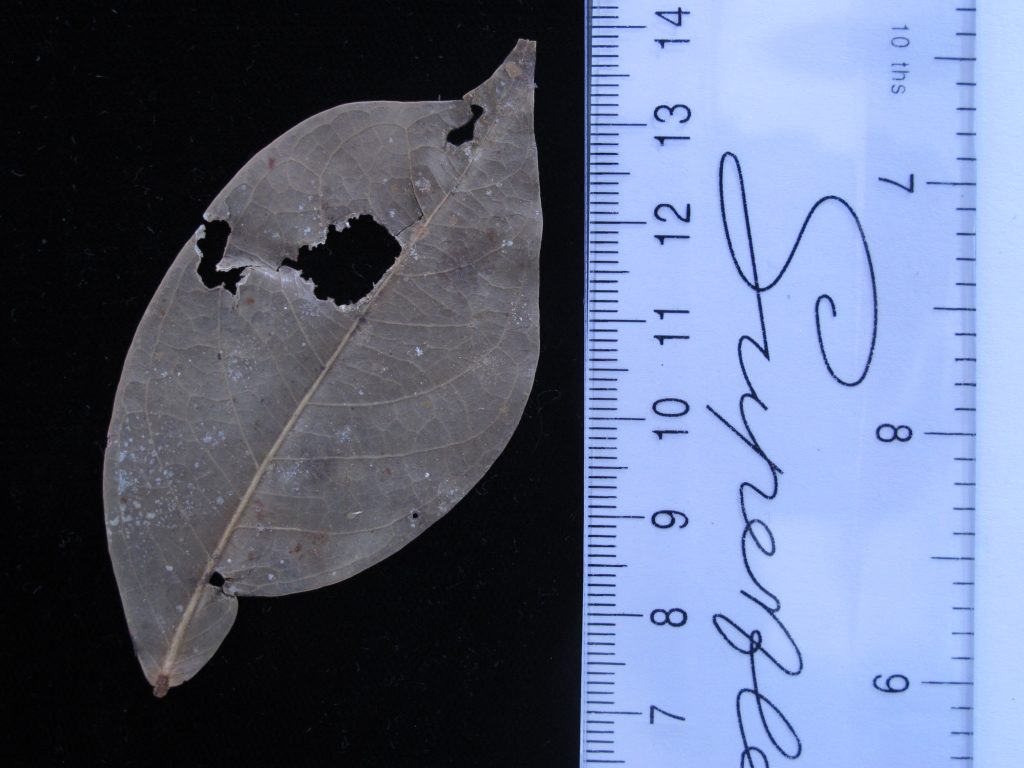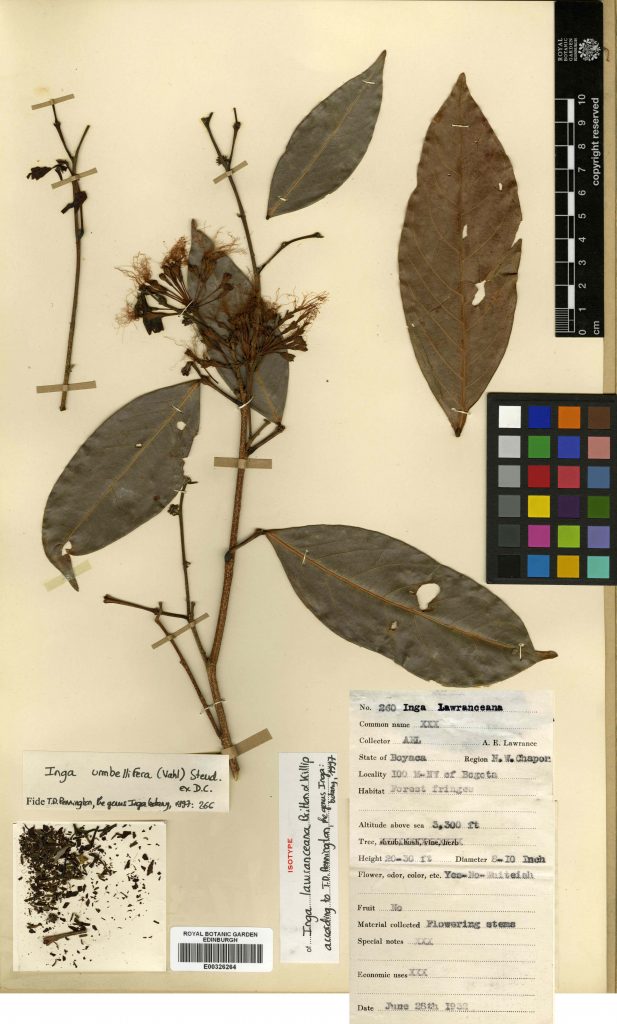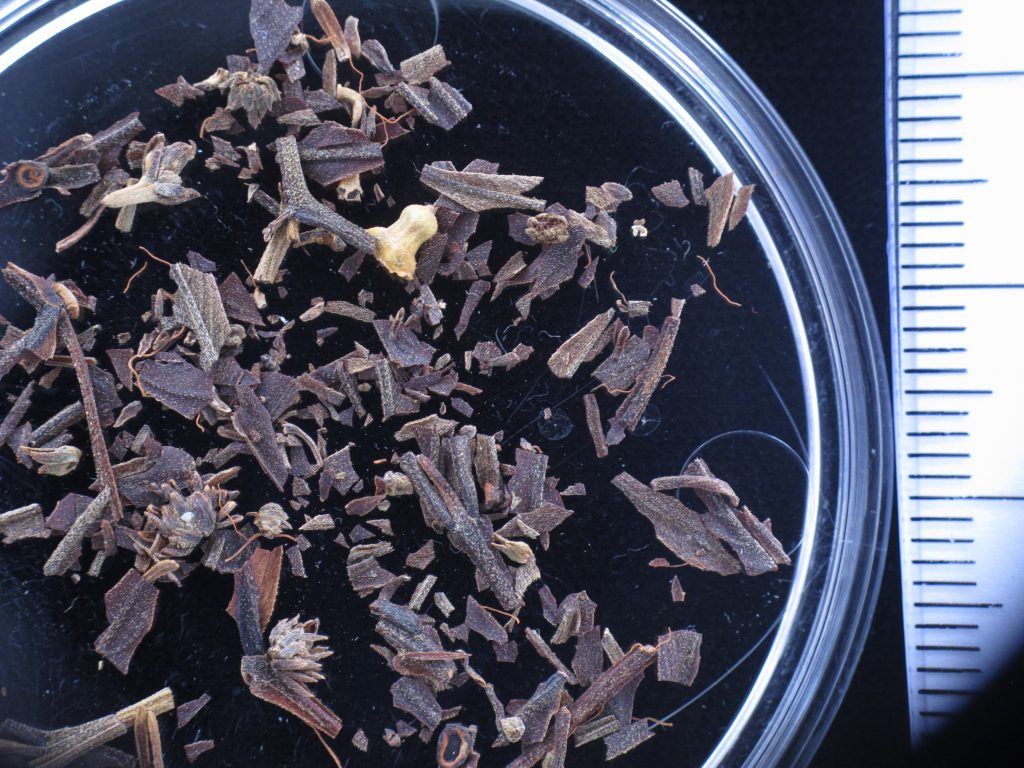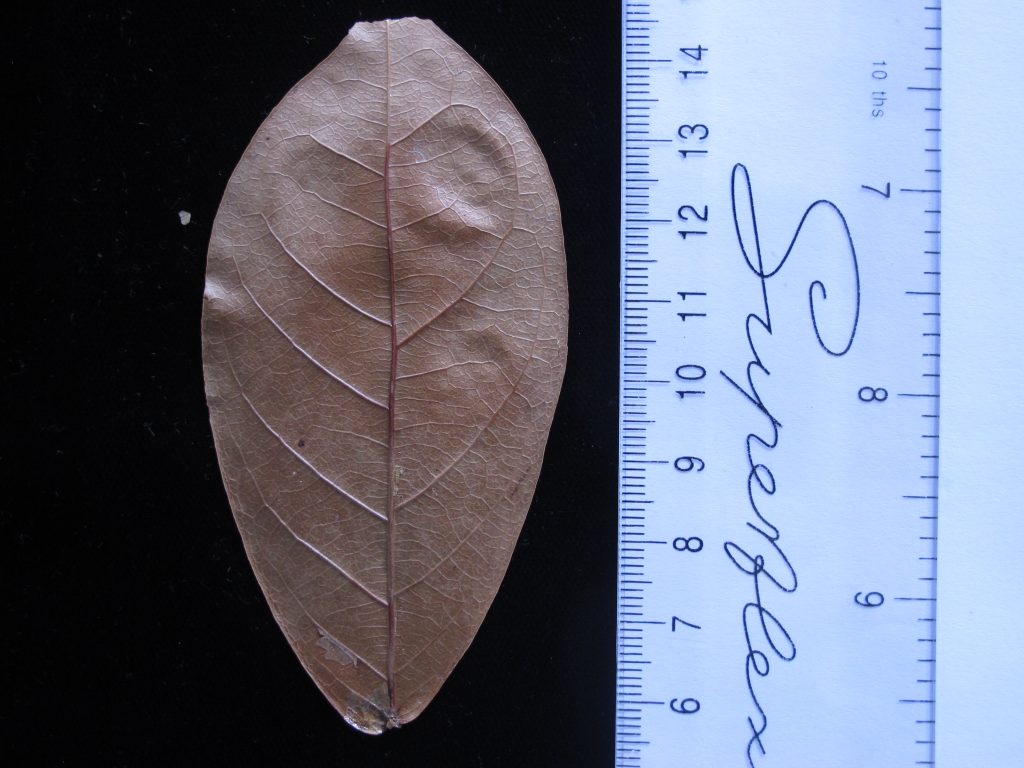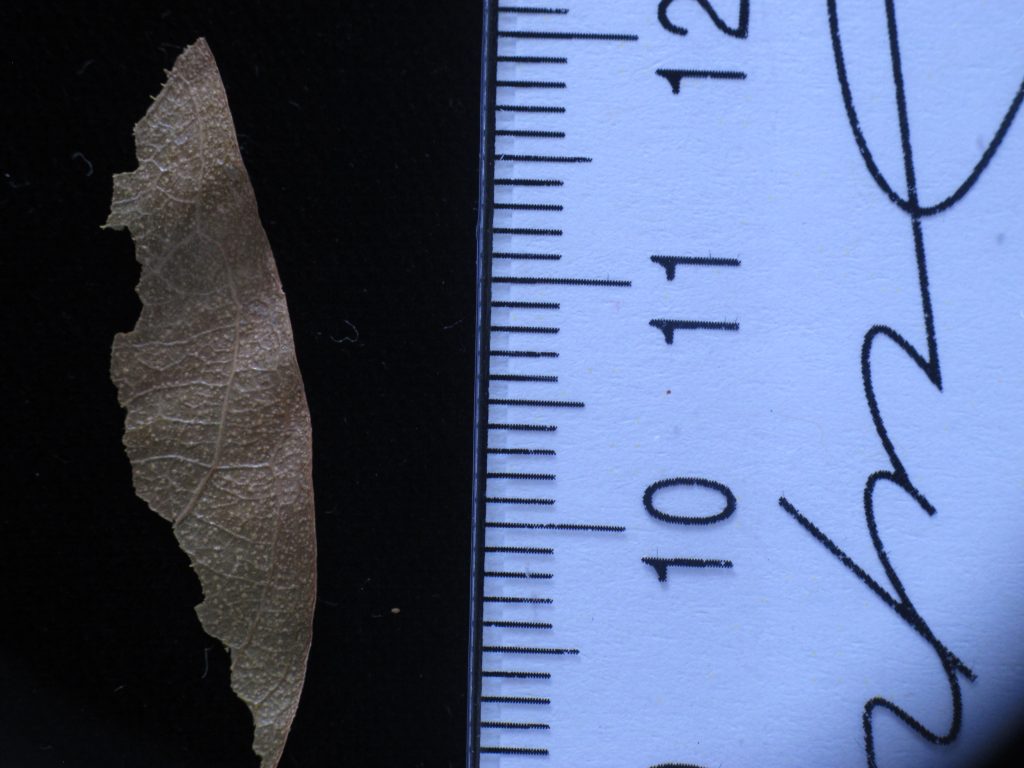Having chosen Inga umbellifera as the study organism for our NBAF-funded project to test the use of hybrid baits for recovery of DNA sequences from herbarium material, we had to pick a set of herbarium specimens from which to extract DNA. The funding we had received would allow us to make and sequence about 30 libraries, but in order to test the methods thoroughly we wanted to include replicates, and test DNA extraction types, methods for repairing degraded DNA, and other library preparation variables. So, instead of sequencing 30 different specimens, we selected only seven (listed below), ranging from only 6 years to 180 years in age. For the two most recent samples, from 2009 and 2004, silica-dried tissue collections had also been made. One of these had already been sequenced by Nicholls et al. (submitted), and the other we included as part of our study so that direct comparisions could be made between sequence data from silica-dried and herbarium material, to see if there were measurable differences in sequence quality, or mutations introduced by DNA degradation processes.
2009: no. 16L 145, FRENCH GUIANA, Inselberg Grand Plateau (E) – we had both silica-dried tissue and the herbarium material for this collection. The green colour of the herbarium material in the picture can be an indication that the plant has been dried quickly (as long as the initial leaf colour was green!).
2004: Kyle Dexter no. 401, PERU, Madre De Dios, Los Amigos Biological Station, floodplain (E) – we had both silica-dried tissue and the herbarium material for this collection. The herbarium material still appeared quite green.
1991: Tello 2608, PERU, Departamento Ica: Provincia Ica (E)
1948: FDBG no. 5682, GUIANA (K)
1932: Lawrance no. 260, COLOMBIA, N.W. Chapor: Boyaca, 100 miles NW of Bogota (E) – the plant tissue that we were given by the RBGE Herbarium staff for our DNA extractions from this plant can be seen on the specimen image, contained in a packet on the lower right hand side. It’s essentially dross of broken up plant parts, including bits of flowers and leaves, and some things that were harder to identify. This specimen is an ISOTYPE for the name Inga lawranceana Britton & Killip, which is a SYNONYM of Inga umbellilfera.
1840: Hostmann no. 1711, SURINAME (K) – this leaf has been taken from a herbarium sheet. The two images show the underside (with the veins visible) and the upper side of the leaf. It appears to have been stuck surface-down, as there is glue residue visible on the upper leaf surface. This leaf appears completely brown.
1835: Matthews no. 1593, PERU, Departamento San Martín: Provincia San Martín, Tarapato (E)
James A. Nicholls, R. Toby Pennington, Erik J.M. Koenen, Colin E. Hughes, Jack Hearn, Lynsey Bunnefeld, Kyle G. Dexter, Graham N. Stone & Catherine A. Kidner. 2015. Using targeted enrichment of nuclear genes to increase phylogenetic resolution in the neotropical rain forest genus Inga (Leguminosae: Mimosoideae). Frontiers in Plant Science 6: 710. doi: 10.3389/fpls.2015.00710
Capturing Genes from Herbaria. I. What it’s all about. http://stories.rbge.org.uk/archives/16411
Capturing Genes from Herbaria. II. Inga. http://stories.rbge.org.uk/archives/16427
Capturing Genes from Herbaria. III. The samples. http://stories.rbge.org.uk/archives/16441
Capturing Genes from Herbaria. IV. DNA. http://stories.rbge.org.uk/archives/16470
Capturing Genes from Herbaria. V. Fragmenting the DNA. http://stories.rbge.org.uk/archives/16525
Capturing Genes from Herbaria. VI. Size Selection. http://stories.rbge.org.uk/archives/16645
Capturing Genes from Herbaria. VII. Comparisons. http://stories.rbge.org.uk/archives/16737
Capturing Genes from Herbaria. VIII. Amplification. http://stories.rbge.org.uk/archives/16788
Capturing Genes from Herbaria. IX. Hybrid capture. http://stories.rbge.org.uk/archives/17298
Capturing Genes from Herbaria. X. An update. http://stories.rbge.org.uk/archives/20751
Capturing Genes from Herbaria. XI. Some metagenomics of a herbarium specimen. http://stories.rbge.org.uk/archives/20817

